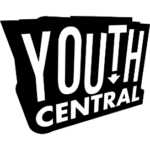The light bulb–a transformative invention
Personally, I view the invention of the light bulb as a major breakthrough in human history. Before the light bulb was invented, people depended significantly more on the natural cycles of sunrise and sunset for their schedule. After its invention, the world would never the same.
Historically, the invention of the light bulb coincided with the discovery new science principles about electricity. This period of rapid expansion of knowledge occurred in the mid-nineteenth century, regarding electromagnetic induction. It also contributed to the discovery of the motor and generator effects, which are both crucial to understanding electricity in greater detail from a physics perspective.
The process of inventing
The light bulb itself was created in the 1870s. According to this article from HowStuffWorks, there was a rush for inventors to “devise a practical, affordable electrical home lighting device” at the time. Thomas Edison was widely credited as the inventor of the light bulb; although Edison created the light bulb with “only a handful of parts,” modern bulbs are actually not too much more complex! Let’s dive into the technology itself.
The light bulb operates based on the principles of atomic theory. Specifically, atoms release photons (energy particles in light) after their electrons become excited. This is the reason we see light from bulbs at all. All light bulbs possess a thin metal filament, which can be heated to extremely high temperatures. Often, the inside of the glass bulb is filled with an inert gas, to allow for the higher filament temperatures as well.
As the bulb is connected to a power supply, the electric current flows into the bulb, then moves to the filament. There, the electrons “bump into” the metal atoms present, heating these atoms up. The free-moving electrons from the power source also boost the vibrating atoms’ bound electrons temporarily to a higher orbital (or energy level) within their electron cloud. As previously mentioned, the bound electrons will eventually fall to their normal level or orbital, releasing light particles.
Tungsten
Tungsten is perhaps the most widely-used metal in the light bulb filaments. It is extremely thin, but very long, allowing it to be “arranged in a double coil” to “fit it all in a small space.” Tungsten is one of the ideal choices for making a light bulb, because it can be heated to extreme temperatures without melting. Its atoms are bonded quite strongly to each other, and can resist disintegrating, even as they collide with the electrons from the current. However, the incandescent light bulbs that use tungsten are generally inefficient. Only a small fraction of emitted light photons from these bulbs actually belong to the visible spectrum–that is, light we humans can see.
It is because of this that newer technologies have been developed over time, to increase the energy efficiency of light bulbs. New technologies includes the LED and more; check out this article for more information about LED!
An important tool for humanity
It is hardly an overstatement to say that the light bulb is one of the most transformative inventions in the last few centuries of human history. Light bulbs allowed society to further develop, and today, we find that we use this technology every day in our lives. In so many ways, we depend on electricity for basic necessities and for entertainment. The light bulb is truly a significant invention, and it continues to shape our world, even to this day.





























